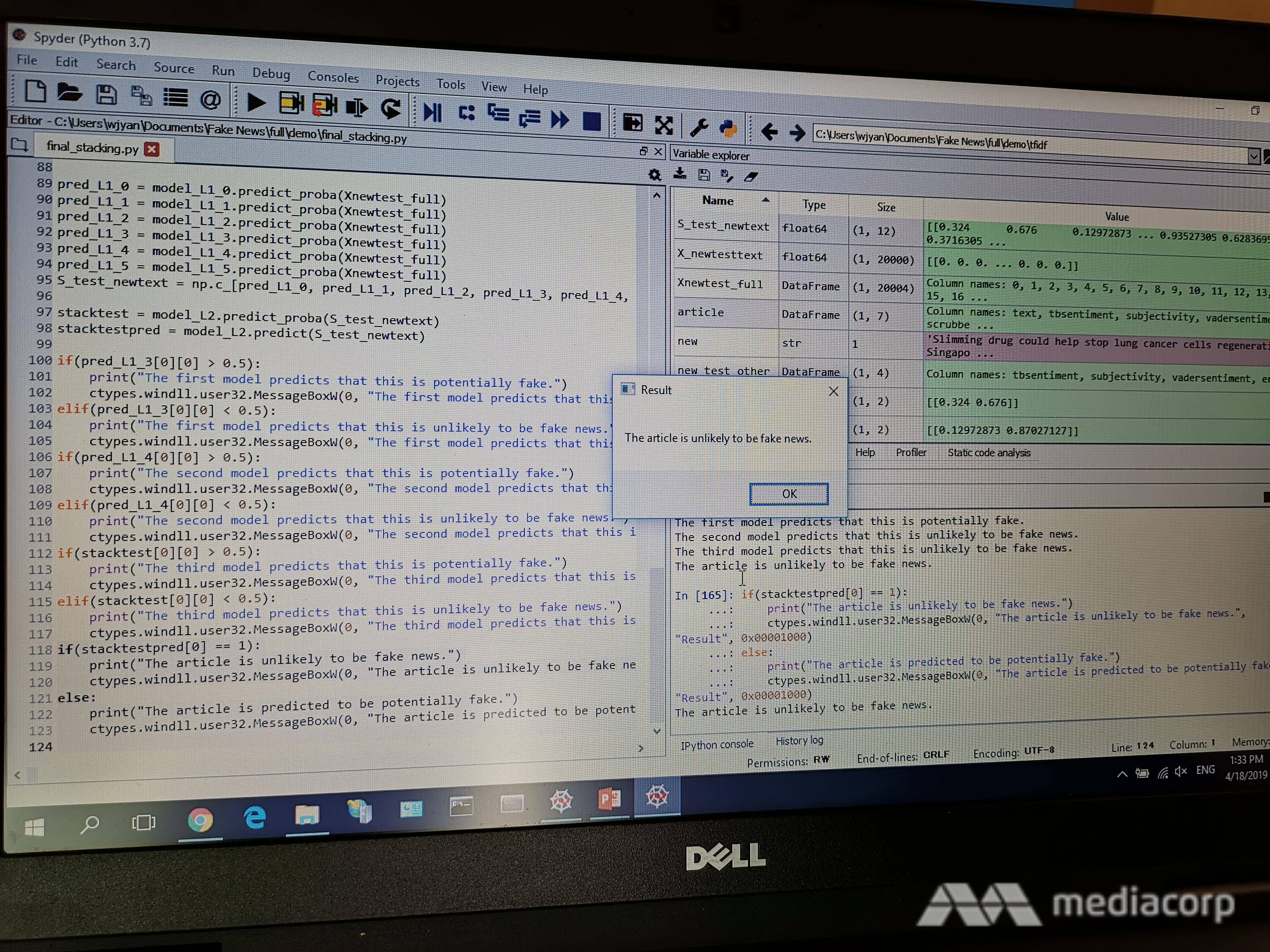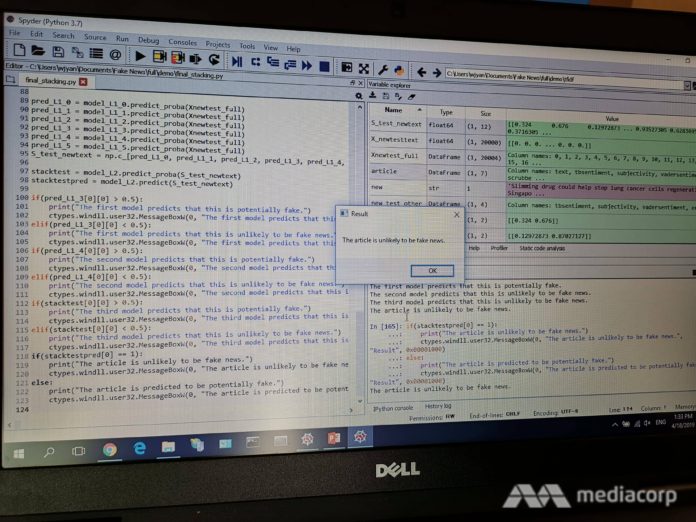SINGAPORE: A 17-year-old Raffles Girls’ School (RGS) student, Liu Haohui, has developed a tool to identify whether an article is authentic – something she hopes will help address the “pressing problem” of fake news, she told CNA in an interview on Thursday (Apr 18).
Speaking on the sidelines of the Young Defence Scientists Programme (YDSP) Congress, Haohui said she had researched the issue and realised there were no viable solutions in the market. Those that existed were localised to their respective markets and usually focused on the United States, she said.
Last year, the teenager interviewed for and was accepted to the four-month Research@YDSP programme run by the Defence Science and Technology Agency (DSTA) and DSO National Laboratories, in which fake news was one of the themes.
The issue of fake news and deliberate online falsehoods is something that the Singapore Government has been looking to address for some time. Earlier this month, the Protection of Online Falsehoods and Manipulation Bill was tabled in Parliament.
“I wanted to see how to use data analytics to protect national security,” said Haohui, who moved to Raffles Institution this year.
After completing her school examinations last October, Haohui picked up new analytics techniques such as deep learning and machine learning. She signed up for an introductory course on machine learning via Udemy, which provided about 40 hours worth of video tutorials and course notes, and learned how there were different techniques for detecting fake news.
“I would spend a few hours on the course each day; sometimes I would watch the videos while having lunch,” she said, adding that she finished the course within two weeks.
Her assigned mentor, Mr Ryan Tarn, also recognised her initiative.
The senior engineer at DSTA’s National Security Programme Centre recounted how Haohui had emailed him a few weeks before the Research@YDSP programme started last September to ask him for materials she could use to learn more about the topic.
TEETHING PROBLEMS
But to tackle the problem of fake news, theories are not enough. Haohui admitted she did not really know how to apply her newly acquired skills.
She also realised that her biggest challenge was in finding the right datasets to train the machine learning models so they could identify fake news.
That there were not many fake Singapore news articles to work with did not help.
Mr Tarn said the dataset that was eventually used to train the predictive model consists of 5,000 authentic Singapore news articles and 1,000 international ones, as well as 6,000 international articles that are fake.
The six pieces of Singapore-related fake news articles that they did get their hands on were left out because they would alter the efficiency of the model, Mr Tarn explained.
Even so, the first round of results was flawed.
Mr Tarn said the six fake news stories were flagged as authentic by the model. The duo hypothesised that the word “Singapore” was being seen as a cue for reliability given that the word was widely used in authentic articles.
He said he suggested that Haohui remove all nouns from the articles to see if it improved accuracy. She took it a step further by removing pronouns as well.
This process took a few days, as the RGS student had to figure out how to implement the above suggestions, cleaning the data and retraining the model.

When a new article is “fed” into the fake news detector tool, it will be analysed by five AI models that will individually assess its authenticity based on their respective parameters. The software will then give an assessment such as “The article is unlikely to be fake news”, Haohui explained.
“It was very exciting to have hands-on experience and apply data analytics techniques to a project that can potentially strengthen our nation’s security,” Haohui said in a press release by DSTA and DSO.
Her project eventually caught their eye, winning the Gold award at this year’s Singapore Science and Engineering Fair together with another Research@YDSP project that looked at how origami can be used to design self-deploying parachutes for disaster relief operations.
“I didn’t expect it at all,” Haohui said. “I just wanted to learn something new.”
The win also gives her the opportunity to participate in this May’s Intel International Science and Engineering Fair, considered by many to be the Olympics of youth science competitions, DSTA said in its press release.
The international competition will be held in Arizona in the United States.
Haohui described the competition as a “great opportunity” for her to share ideas and interact with like-minded people.
She said she wants to further develop her prototype into a mobile app or website that can guide Singaporeans in making more informed decisions.
“I just want to make a contribution to society,” said Haohui.





